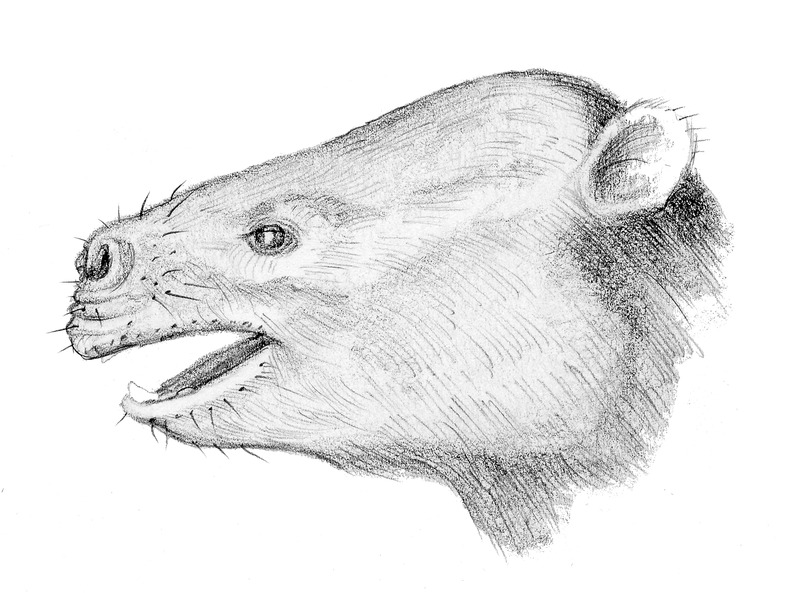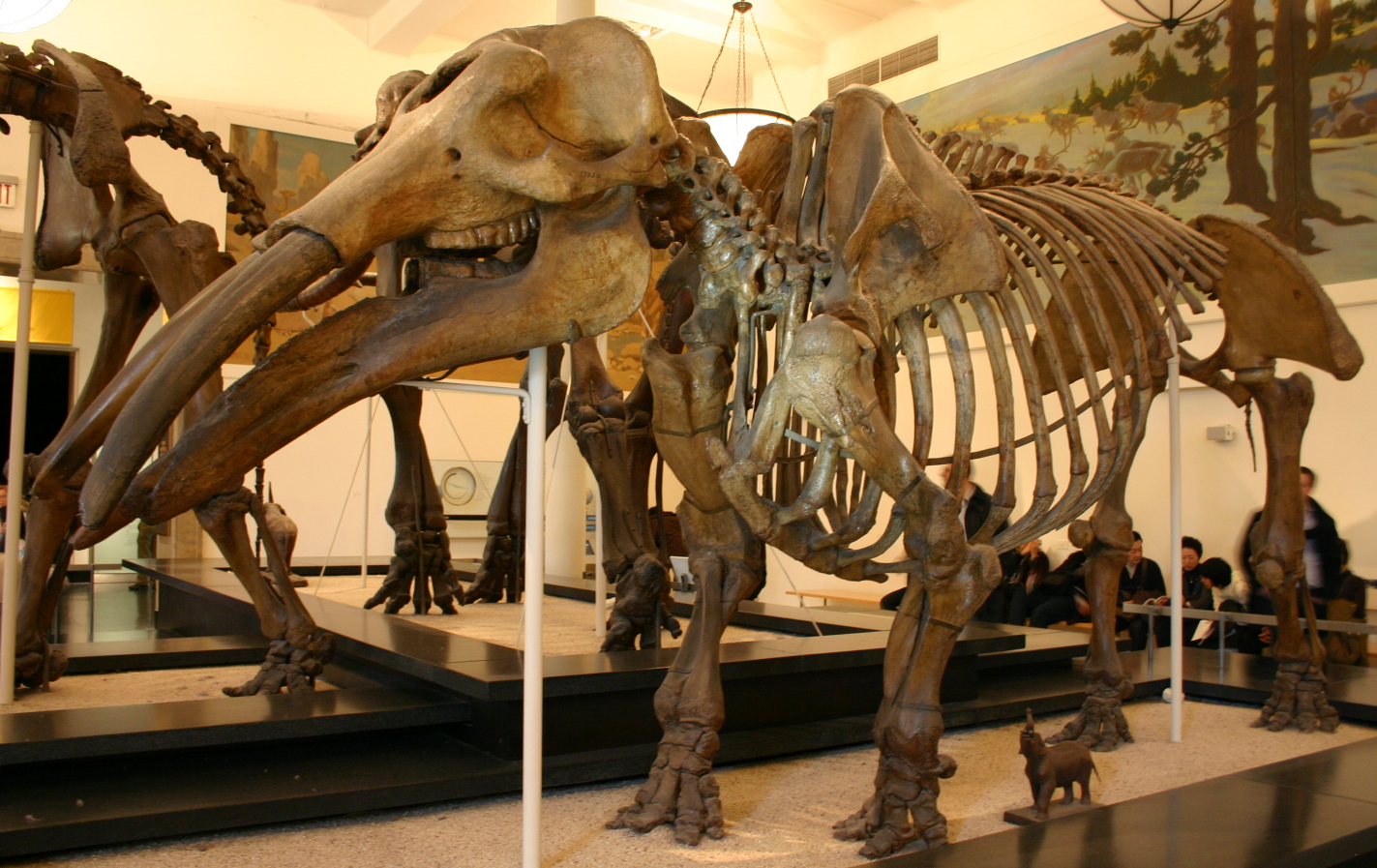Listen to Episode 66 on PodBean, Spotify, YouTube, or wherever you’d like!
In this episode, we take a deep dive into the largest land mammals that have ever lived. We’ll explore the handful of modern species and their extraordinarily diverse evolutionary history. From mammoths to mastodons, shovel-tuskers to miniature island-dwellers, the fossil record is full of bizarre elephants.
In the news
Evidence of ancient meteorite impacts hidden inside fossil clams.
Bizarre bird foot in amber has a uniquely long toe.
Part of a braincase from Greece is the oldest Homo sapiens outside of Africa.
Australopithecine teeth reveal patterns of breastfeeding in young.
Proboscideans
Proboscidea is the order that includes all modern elephants and their closest relatives. Today, only three species represent this group: the Asian elephant, African bush elephant, and African forest elephant. But in the past this group included an amazing diversity that spanned across Africa, Asia, Europe, and the Americas.

This group got their start in Africa just under 60 million years ago. The earliest proboscideans didn’t look much like elephants. Many, like Eritherium, probably lacked tusks and only a few may have had the beginnings of a trunk. These were also quite small, often no taller than about a meter (3 or 4 feet).


During the Miocene, as Africa and Eurasia grew closer, proboscideans began to spread across the Old World. Here, we start to see larger and more diverse groups. They start to look like elephants!



Among the most bizzare proboscideans were the aptly named “shovel-tusked elephants.” This included gompotheres and amebelodontids. Thanks to analysis of the wear patterns on those tusks, scientists suspect the tusks weren’t really being used for digging (as was once thought!) but that they used their specialized lower tusks for stripping vegetation off trees.


As the Miocene continues into the Pliocene we see the first proboscideans make it into North America, as well as the rise of the Elephantids, which include modern elephants and mammoths.



Believe it or not, several extinct proboscidean groups made it to islands, where they experienced insular dwarfism. These dwarf elephants ranged from 7 feet tall all the was down to under 3 feet tall. On Wrangel Island, a dwarf population of woolly mammoths survived up until a mere 4,300 years ago.

The vast majority of proboscideans die out at the end of the last inter-glacial period during the Late Pleistocene Megafaunal Extinction.
Other links
Ancient DNA changes everything we know about the evolution of elephants
Mastodons to the Max – the Pacific mastodon
Elephants Have a Sixth ‘Toe”
—
If you enjoyed this topic and want more like it, check out these related episodes:
- Episode 107 – Tusks
- Episode 144 – Evolutionary Gigantism and Dwarfism
- Episode 4 – Island Evolution
- Episode 35 – De-extinction
We also invite you to follow us on Twitter, Facebook, or Instagram, buy merch at our Zazzle store, join our Discord server, or consider supporting us with a one-time PayPal donation or on Patreon to get bonus recordings and other goodies!
Please feel free to contact us with comments, questions, or topic suggestions, and to rate and review us on iTunes!
First, a minor quibble: a Phillip’s screwdriver has a tip with a cross-section like this: + while a regular screwdriver — which is probably what you meant has a tip with a cross-section like this: |
Onto proboscideans (probably misspelled)!
Other than the frozen mammoths from Siberia (any from Alaska, Northwest Territory, or Nunavut?), have any details about trunks been preserved? I know that soft tissue will leave traces.
LikeLike
Have any frozen proboscideans been found in Alaska or the Canadian Arctic?
The large proboscideans also suggest a possible topic: how big can animals get? Obviously, pretty large, but were the giant sauropods a physical limit or a practical llimit?
LikeLike
At least some mammoth material has been found frozen in Alaska. https://alaskamuseum.tumblr.com/post/109507993040/effie-the-wooly-mammoth-on-a-late-summer-day
How big can animals get? is an excellent question. That would make a fun episode discussion, especially since we ultimately don’t know!
LikeLike
Has anyone noticed the pink extension to Mammuthus exilis’ trunk in the photo you showed?
(I do know it’s the forearm of the spectator wearing the blue shirt in the right of the picture 😉 )
I wish that some of the other proboscideans had survived. Of course, 19th Century humans would likely have exterminated them.
LikeLike